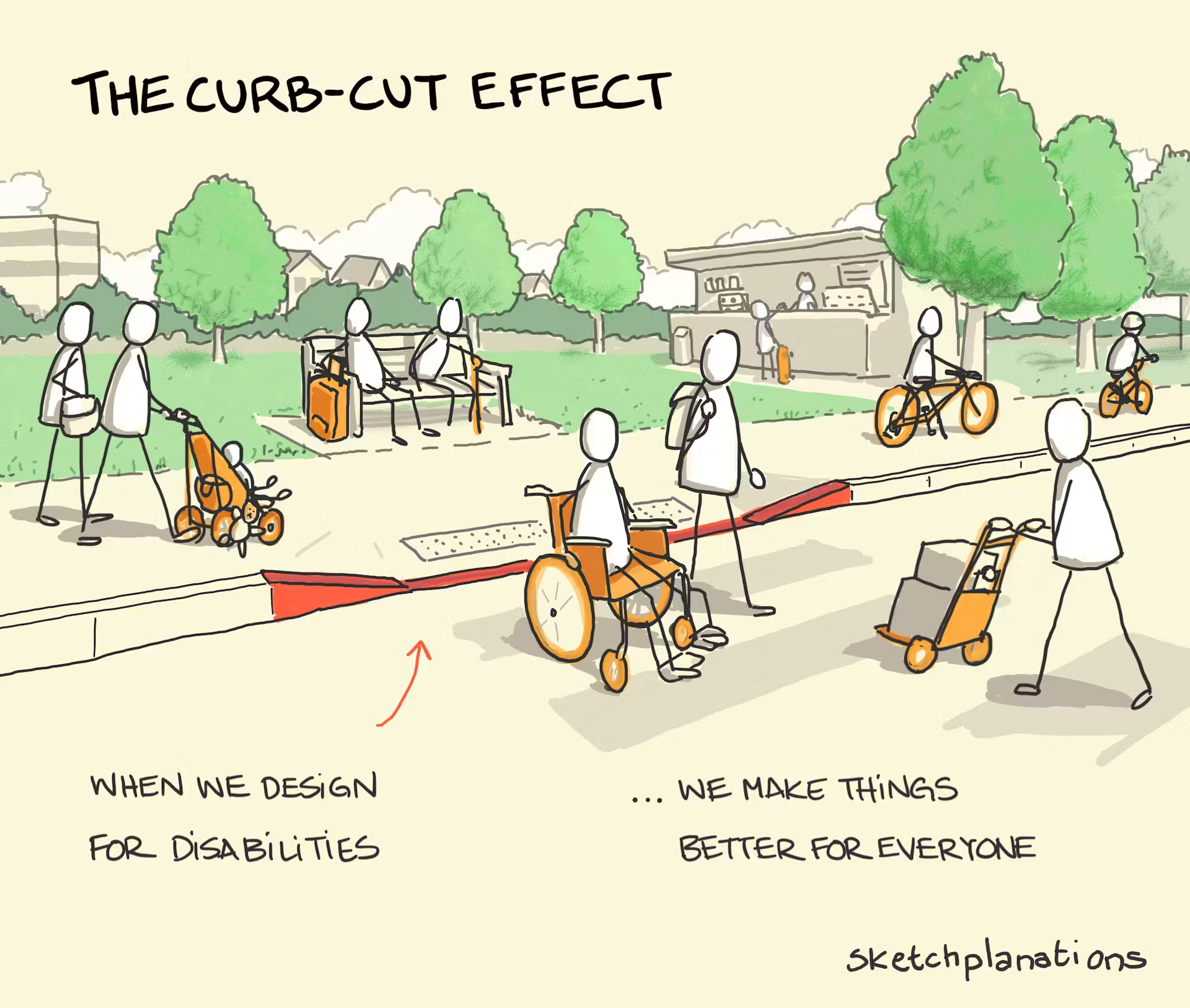What do you know about Digital Accessibility? Following a powerful in-house knowledge-sharing session on the topic, I wanted to share what I learned and why at Branchspace we think it matters for everyone.
A Digital Experience you can’t use
Imagine shopping online for a duvet cover, but all you can hear is a robotic voice reading out jumbled code. You cannot see any images, text, or even navigate the page to find key information about the desired product.
This was the eye-opening simulation shared by Marta Kończal from our UX/UI Design team during a Branchspace internal knowledge-sharing session. It was a powerful reminder that for millions of people, this is everyday digital reality.
Why Accessibility isn’t optional
Did you know that 27% of the EU population is estimated to have some form of disability1? That is over a quarter of the population whose digital experiences may be compromised every day.
Accessibility is about more than compliance. It is about independence, dignity, and inclusion. Making sure accessibility standards are respected guarantees fullness of experience for everyone.
Accessibility is also a smart move for businesses as accessible products can reach more users and foster loyalty in the long term. How do non-sighted individuals navigate your booking flow? Can they find all the information they need to organise their trip and with as much ease as sighted people? If not, one can easily see why they would favour a different company or platform to book their next flight...
According to the 2024–2025 State of Digital Accessibility Report, 70% of organisations in Europe and the U.S. say accessibility has a positive impact on customer acquisition and 68% agree it improves customer retention.
Finally, Digital Accessibility is now a legal requirement in the EU: the European Accessibility Act came into effect in June this year, giving organisations five years to meet the standards outlined in EN 301.549, which references WCAG 2.2 guidelines2.
What I learned so far
One key takeaway from our team’s knowledge-sharing presentation was that Digital Accessibility affects everyone and not just people with permanent disabilities. Think older adults, mobile users, people with slow internet connection, or those experiencing temporary impairments... The ‘impaired minority’ is a minority anyone might join at some point in their life.
We also discussed the “curb-cut effect” and how designing with accessibility in mind can help improve usability for all.

Finally, Marta demonstrated how screen readers and low-vision simulations can be great tools to help reveal hidden barriers in everyday interfaces. They are useful to raise awareness and understand where accessibility might be improved on a given application or website.
Where Branchspace stands
As a company, we are taking Accessibility seriously and are mindful of our responsibility in creating products that are suitable for all users.
In line with our ESG strategy and vision, we aspire to embed accessibility into our Triplake product development lifecycle and our fantastic UX team is leading the way, building internal resources and checklists based on WCAG standards.
On the Consulting side, we are already helping out our customers by conducting accessibility audits.
Digital Accessibility is everyone’s responsibility—from designers and developers to testers and managers and as our CTO, David Turton, put it during the session:
“ Even if we were perfect today, we need to keep building accessibility into our day-to-day work.”
Let’s Talk
At Branchspace, we believe inclusive design is better design.
If you are curious about how accessible your digital products are or want to explore how to improve them, get in touch with our team today! We would love to help you assess, plan, and build digital experiences that work for everyone.
References:

